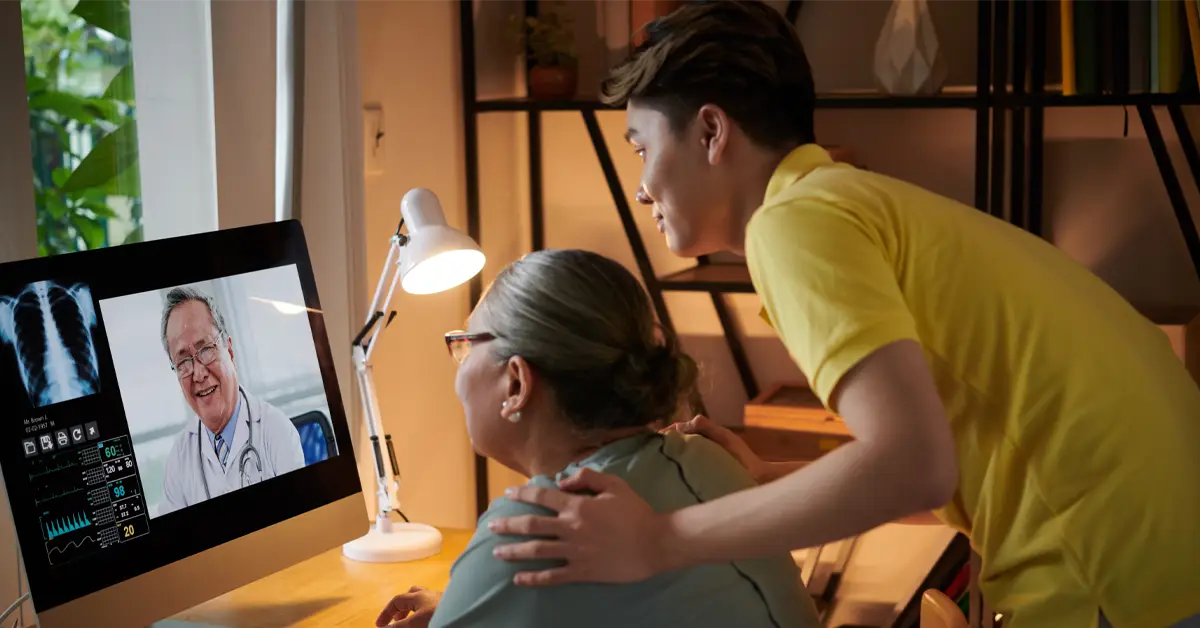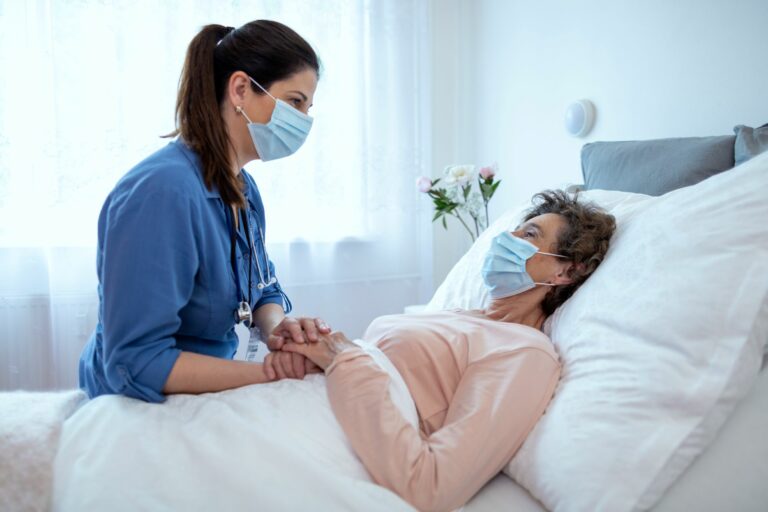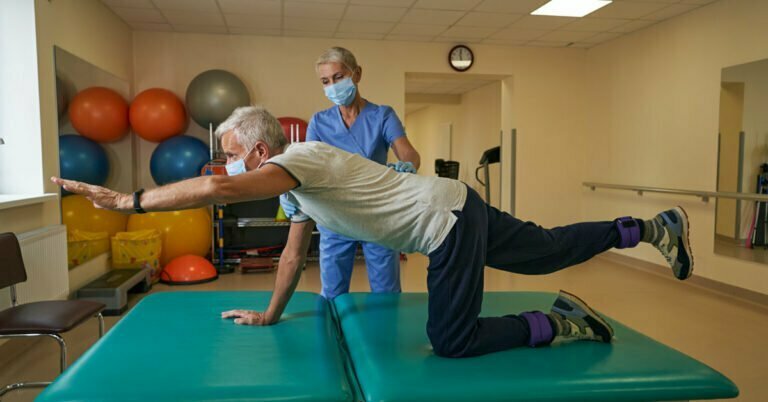With the ever-growing use of technology in our everyday lives, it is no surprise that health care is experiencing similar advances. One such advancement is the use of remote therapeutic monitoring (RTM).
In this article we’ll talk about RTM and how it can improve patient care.
What is Remote Therapeutic Monitoring?
Remote therapeutic monitoring (RTM) is a type of treatment that utilizes technology to monitor and manage a patient’s health remotely, typically outside of a traditional clinical setting. RTM can be particularly useful for physical therapists, who can use RTM to provide therapy remotely and communicate with the patient and caregiver to ensure therapy adherence and track progress. RTM is used for musculoskeletal system therapy as it allows for ongoing monitoring of the patient’s condition and for adjustments to the therapy plan as needed.
RTM may involve interactive communication with a qualified health care professional, such as a physical therapist, and may also include patient education on how to use the medical devices and manage their condition. RTM often also focuses on non-physiological data, such as patient adherence and reported pain levels.
The Centers for Medicare & Medicaid Services (CMS) introduced new codes that can be used by healthcare providers to submit claims for reimbursement for the time and resources spent on providing remote care to patients. Primary billers of RTM codes are typically healthcare providers, such as physical therapists, responsible for submitting claims for reimbursement for the time and resources spent on providing RTM treatment.
Types of Technology Used for Remote Therapeutic Monitoring
RTM can be provided using a variety of medical devices, such as wearable sensors, mobile health apps, and telemedicine platforms. These devices may be regulated by the Food, Drug, and Cosmetics Act (FDCA), and should be used in accordance with the guidelines set forth by the FDCA.
Wearable Devices
Wearable devices are small, portable devices that can be worn on the body, such as smart watches, fitness trackers, and wearable sensors. Wearable devices can continuously monitor a patient’s vital signs, such as heart rate, blood pressure, and sleep patterns, and then transmit the data to a healthcare provider for analysis.
Mobile Health Apps
Many health apps are available for smartphones and other mobile devices that can help patients track their health indicators, manage their medications, and connect with healthcare providers. These apps can be beneficial for managing chronic conditions, such as diabetes or hypertension, and can help patients make lifestyle changes to improve their health.
Telemedicine Platforms
Telemedicine platforms allow patients to have virtual appointments with healthcare providers, either through video or phone calls. These platforms can be used for consultations, therapy sessions, or other types of care, and can be accessed from anywhere with an internet connection.
Electronic Health Records (EHRs)
EHRs are digital versions of a patient’s medical record that can be accessed by healthcare providers from any location. By using EHRs, providers can view a patient’s medical history, treatment plan, and other relevant information, and update the record with new information as needed. This helps to ensure that all providers involved in a patient’s care have access to the most up-to-date information.
Examples of How Technology Can Enhance Remote Therapeutic Monitoring
There are many ways in which technology can enhance remote therapeutic monitoring and improve patient care, including:
- Continuous monitoring of vital signs and health indicators: Wearable devices and mobile health apps can allow for continuous monitoring of a patient’s vital signs and other health indicators, such as heart rate, blood pressure, and blood sugar levels. This monitoring can help healthcare providers identify potential issues or changes in a patient’s health more quickly and intervene as needed.
- Remote medication management and adherence tracking: Technology can be used to help patients manage their medications, including reminding them to take their medications on schedule and tracking their adherence to their treatment plan. This can help to improve medication adherence and prevent negative outcomes, such as hospitalizations.
- Virtual therapy sessions and appointments: Telemedicine platforms can be used to provide virtual therapy sessions and other appointments, allowing patients to receive care from the comfort of their own home. This care from home can be particularly beneficial for patients who live in rural or underserved areas, or who are unable to physically visit a healthcare provider due to mobility issues, or the COVID-19 pandemic, or even a rough flu season where exposure to people should be limited.
- Real-time communication with healthcare providers: Mobile health apps and telemedicine platforms can allow patients to communicate with their healthcare providers in real-time, including sharing updates on their health and receiving feedback or guidance. This can help to ensure that patients are receiving timely and appropriate care.
Challenges and Considerations in Implementing Technology for Remote Therapeutic Monitoring
Ensuring Patient Privacy and Security of Data
It is important to ensure that patient data is protected and kept private when using technology for remote therapeutic monitoring. Privacy protection may involve implementing secure systems for storing and transmitting data, as well as training staff on proper data handling protocols.
Overcoming Barriers to Adoption
There may be barriers to adoption of technology for remote therapeutic monitoring, such as cost, lack of access to technology, or difficulty navigating new systems. It may be necessary to provide education and support to help patients and healthcare providers overcome these barriers and effectively use technology for remote care.
Integrating Technology into Existing Care Protocols and Processes
When implementing technology for remote therapeutic monitoring, it is important to consider how it will fit into existing care protocols and processes. Fitting in with these processes may involve adapting current protocols to incorporate technology, or developing new protocols specifically for remote care. It may also be necessary to consider how to integrate data from different technology systems in order to provide a complete picture of a patient’s health.
DrKumo’s Remote Patient Monitoring Technological Solution
As a provider of remote patient monitoring technological solutions, DrKumo can help healthcare providers implement technology for remote therapeutic monitoring. Implementation may involve providing wearable devices, mobile health apps, telemedicine platforms, or electronic health records to support remote care.
By leveraging the solutions provided by DrKumo, healthcare providers can continuously monitor a patient’s objective and subjective health indicators and manage medication adherence. This can help to improve patient outcomes and provide convenient, high-quality care to patients, regardless of their location.
Takeaways
Remote therapeutic monitoring treatment involves using technology to monitor and manage a patient’s health remotely, typically outside of a traditional clinical setting. This type of treatment often involves communication with the patient and caregiver to ensure that the patient’s care plan is being followed and to track progress. By using technology for remote therapeutic monitoring, healthcare providers can provide convenient and continuous care to patients, even when the patient is unable to physically visit a clinic or hospital.
While there are challenges and considerations to consider when implementing technology for remote therapeutic monitoring, the benefits are clear. By overcoming barriers to adoption and effectively integrating technology into existing care protocols and processes, healthcare providers can provide high-quality, convenient care to patients, regardless of their location.
Looking to the future, it is likely that the use of technology for remote therapeutic monitoring will continue to grow and evolve, leading to even greater improvements in patient care. As technology continues to advance, it will be important for healthcare providers to stay up to date on the latest developments and consider how they can be applied to improve patient care.
To learn more about Remote Therapeutic Monitoring, contact DrKumo today.








